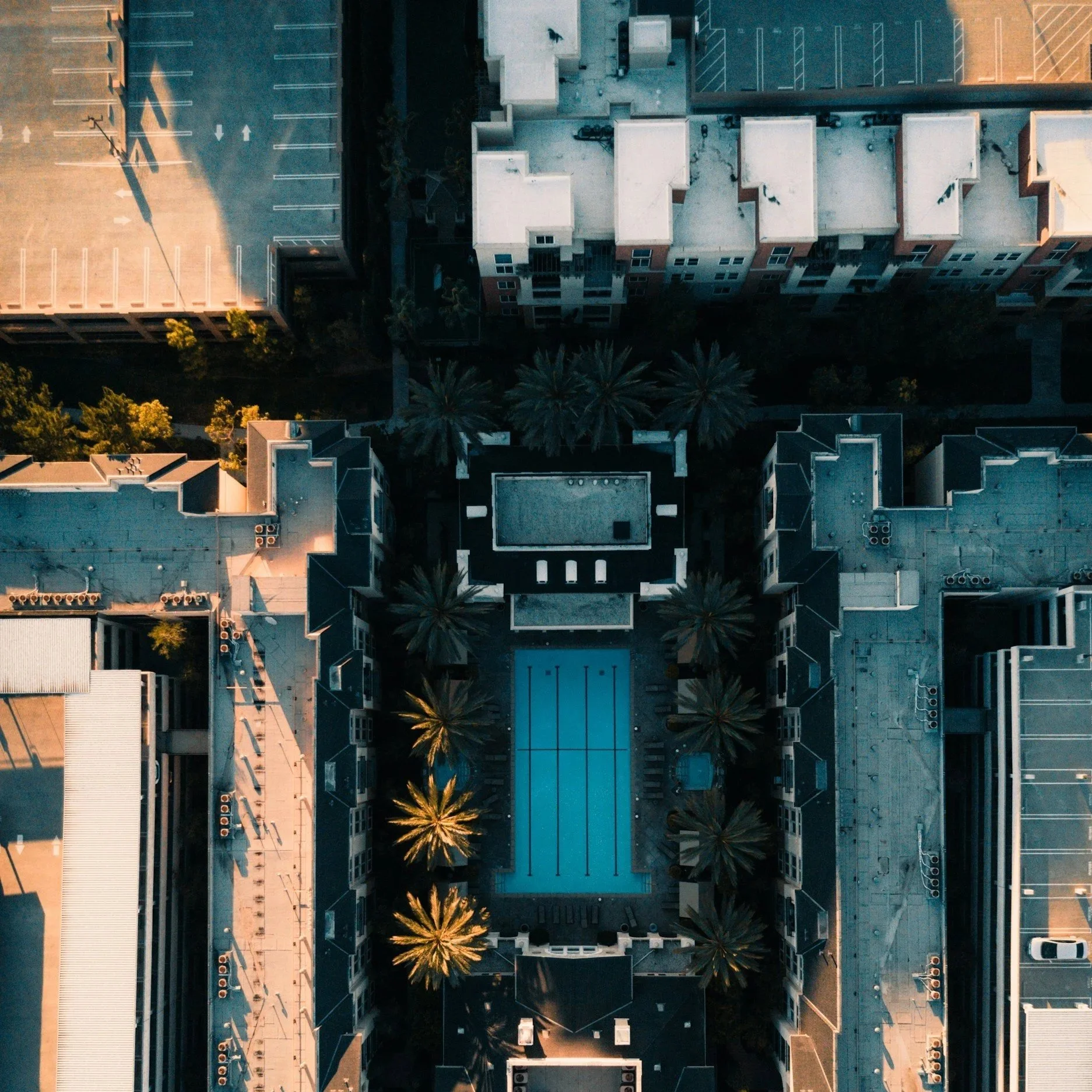Schools, Roads, and Green Space: The Real Cost of Irvine’s Housing Crunch
Overhead view of Irvine’s rapid growth: more apartments, more residents, and rising concerns about livability.
Photo credit Derek Liang
Driving through Irvine these days, it’s hard not to notice the roadwork and the rise of new apartments. As one of Orange County’s fastest-growing cities, Irvine pushes to meet a mounting housing demand. For many locals, however, the city is becoming overly crowded. This raises the question: Can Irvine continue to grow while remaining a livable city?
Right now, the Zillow estimate for the average home price sits around $1.6 million. With demand far outpacing supply, waitlists for affordable housing are growing. This pushes many residents, especially young professionals and students, into longer and longer commutes to work or school.
Since its founding in 1971, the city has followed a master plan. It envisioned a balance between housing, job centers, parks, and retail. In recent years, the pressure to accommodate the growing population is clashing with community concerns.
Increasing Traffic
According to Marika Poynter, Deputy Director of Community Development at Irvine City Council, Irvine is concentrating developments in three areas: Spectrum, Oak Creek, and Great Park. These “proximity villages” are designed as walkable, mixed-use communities close to jobs and transit. With hundreds of units underway, traffic becomes a top concern.
Last month, on June 24th, during a City Council meeting discussing the conversion of Oak Creek Golf Course into a neighborhood, many residents voiced their concerns. A local mother shared her frustration: “When I left my son at his math tutor before I got here at 4:00 PM, it took me 6 minutes. And I just picked him up now and ran and came here, it took me 19 minutes.”
Longtime resident Oliver Sanchez added, “In the past, some of that growth has been thoughtful and necessary, but lately it feels rushed.” He believes that adding thousands more residents will result in more cars, noise, and pollution, pushing Irvine "beyond the tipping point."
Poynter acknowledged those concerns, noting that most new developments have to do traffic studies so the city can check for problems and ask for changes if needed.
The city’s 2045 plan hopes to reduce car dependence with better walking, biking, and transit options. But those upgrades take time, and actual, practical changes require a cultural shift. Until then, traffic congestion keeps getting worse.
School Overcrowding and Infrastructure Strain
Another concern among Irvine families, especially those with children, is overcrowded schools. A public commenter shared her story: “The kids from Orange Tree were originally supposed to go to Oak Creek School, like my son, and he was actually sent to Eastshore… Everyone at Oak Creek School has complained that the school has doubled. Eastshore is full, Oak Creek is full, Springbrook is full. I don’t know where the kids are gonna go.”
According to IUSD policy, Irvine schools have the following capacities: elementary and middle schools are designed for 1200 students, while high schools can accommodate 3200 students. For many families, having an elementary school within walking/biking distance is extremely important. As new families move in, however, these neighborhood schools struggle to keep up.
Green Space and Density
Open spaces, whether parks, trails, or golf courses, have long been central to Irvine’s identity. The city’s open space program, established in 1988, protects around 9,000 acres, including trail systems like the Jeffrey Open Space Trail and the Venta Spur. But residents are beginning to worry that the city’s charm could get lost in the rush to densify.
One public commenter summed it up bluntly: “With all the high-rise apartment buildings that you guys are building throughout the city, those are not affordable… and it will just add more traffic to our neighborhoods. Stop turning the City of Irvine into Los Angeles.”
City planners, however, continue to stress that Irvine’s expansion is being handled with long-term sustainability in mind. Poynter emphasized the city’s proactive planning: before sustainability was a buzzword, it was built into Irvine’s DNA. The proximity villages include shared public spaces and trail connections to help maintain that livable, vibrant community feel.
Looking Ahead
Irvine is growing fast, but the tension between development and livability isn’t going away anytime soon. Residents want more housing, yes, but they also want shorter commutes, open schools, and space to breathe.
As more developments break ground and the population continues to climb, the city faces a big question: How do we grow without losing what made Irvine special in the first place?

